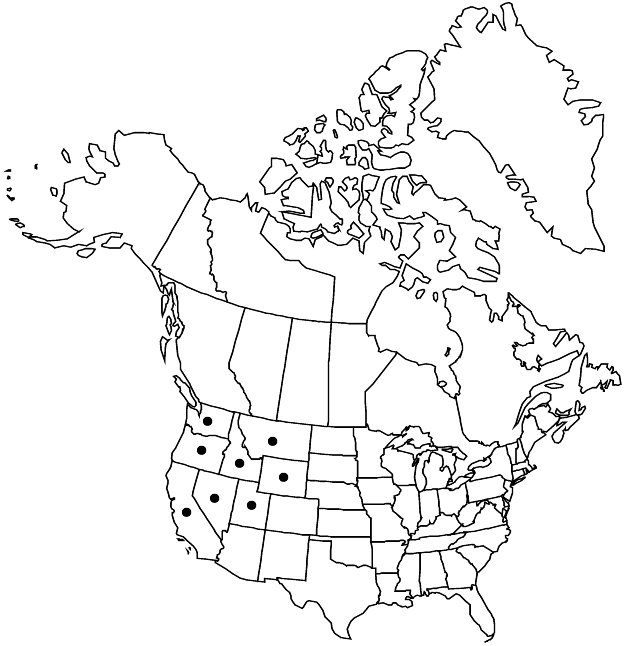Silene oregana
Proc. Amer. Acad. Arts 10: 343. 1875.
Plants perennial; taproot stout; caudex simple or sparsely branched, woody. Stems usually simple proximal to inflorescence, 30–50 (–70) cm, puberulent and shortly stipitate-glandular, especially distally. Leaves 2 per node, gradually reduced distally; basal petiolate, blade oblanceolate, spatulate, 5–9 cm × 7–15 mm (including petiole), apex acute to obtuse, usually glabrous adaxially, sparsely pubescent abaxially; cauline in 4–6 pairs, blade linear-lanceolate, 1–6 (–8) cm × 2–6 mm, puberulent and shortly stipitate-glandular. Inflorescences thyrsate, 3–25-flowered, open, bracteate, pedunculate, stipitate-glandular, viscid; bracts narrowly lanceolate, 2–25 mm, apex acuminate. Pedicels ascending. Flowers: calyx prominently 10-veined, narrowly campanulate, umbilicate, somewhat clavate and constricted below middle around carpophore, 9–15 × 3–4 mm in flower, broadening to 7 mm in fruit, membranous, shortly stipitate-glandular, veins parallel, slender, tinged dark red, with pale commissures, lobes ovatelanceolate, obtuse, 2–3 mm, margins scarious; corolla creamy white, sometimes pink tinged, clawed, claw equaling calyx, glabrous, broadening only slightly into limb 3–8 mm, limb with 4–6 linear lobes, some splitting to 10 linear segments, appendages 4–6, linear, 1–1.5 mm, apex acute; stamens ca. equaling petals; filaments glabrous; stigmas 3 (–5), ca. equaling petals. Capsules ellipsoid, slightly longer than calyx, opening by 6 (or 8 or 10) very brittle teeth; carpophore 2–4 mm. Seeds brown, ± reniform, angular, glossy, shallowly tuberculate. 2n = 48.
Phenology: Flowering summer.
Habitat: Dry, grassy slopes, rocky areas, open woodlands and forests
Elevation: 1500-2800 m
Distribution

Calif., Idaho, Mont., Nev., Oreg., Utah, Wash., Wyo.
Discussion
The creamy white laciniate petals are the best field (and herbarium) guide to distinguishing this species from Silene parryi and S. scouleri, both of which have 2–4-lobed petals that are usually dingy cream to greenish or purple tinged.
Selected References
None.